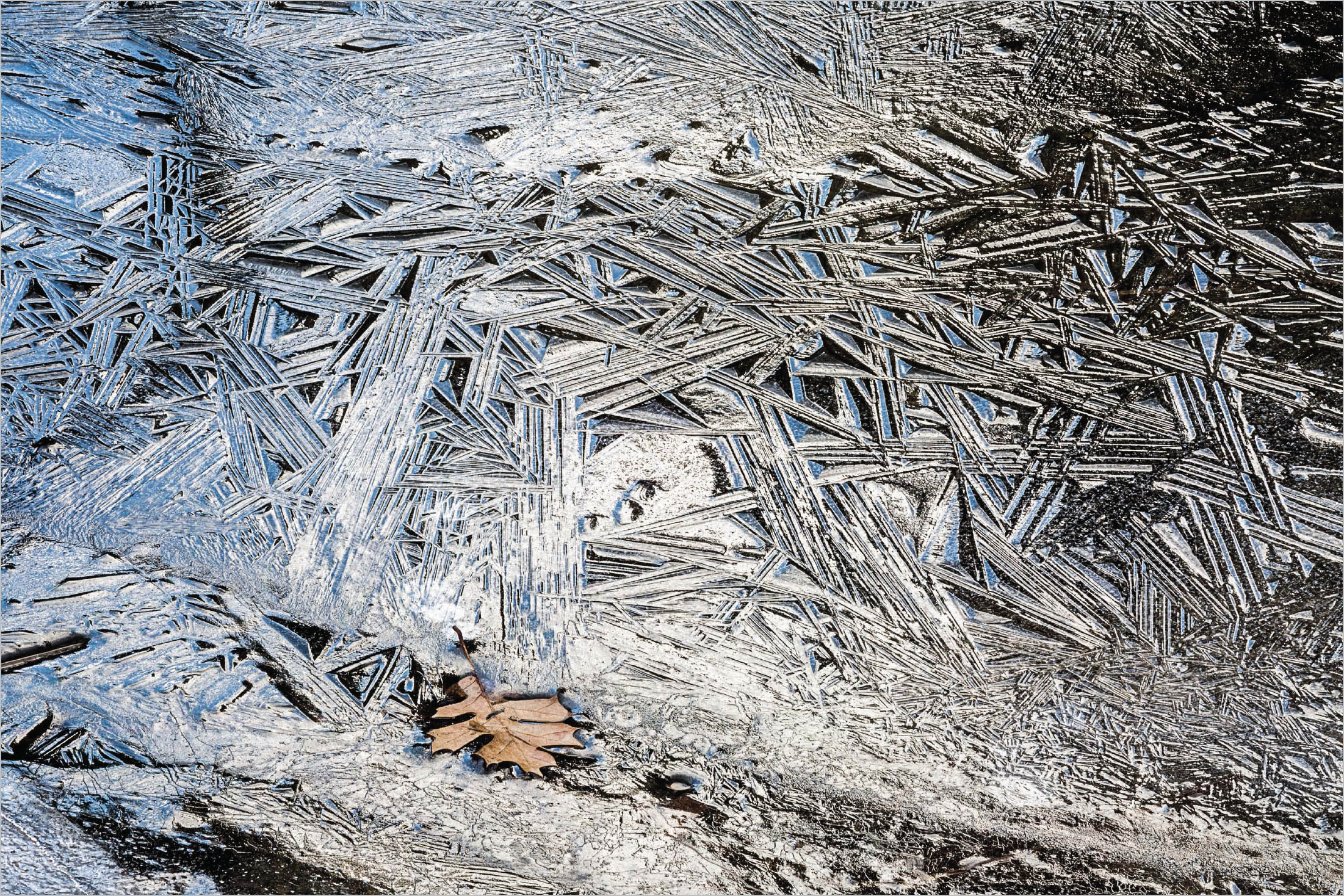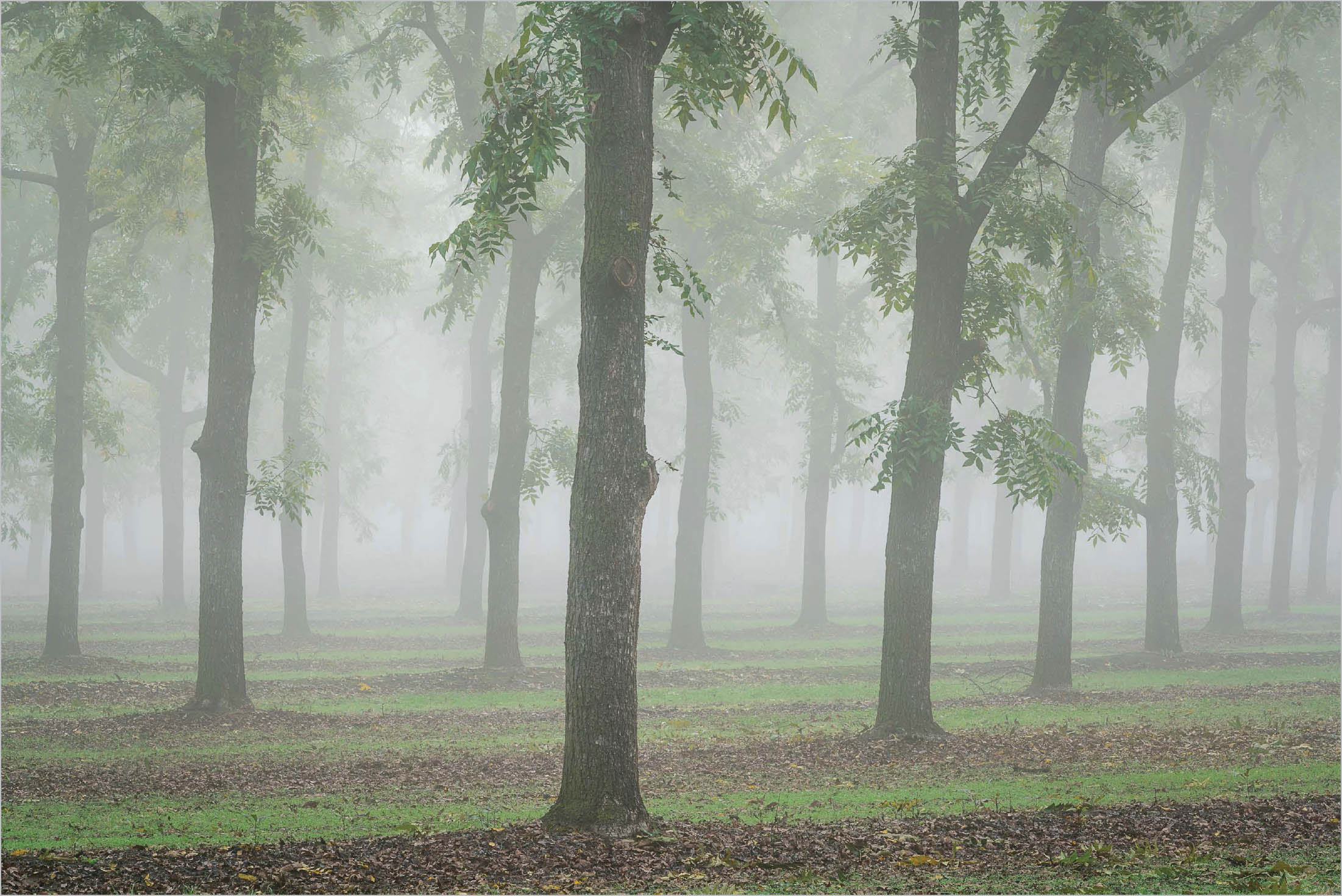WINTER ETCHINGS
TUNE INTO THE GRAPHIC, ELEGANT STARKNESS OF THE SEASON
I love photographing in winter. When trees are bare, their graceful forms are starkly revealed. The tones of beige and gray or black and white form a subtle palette in the landscape. The lines of grass and shrub, ice and fallen leaves, display themselves in simple, elegant designs, like a drawing or etching.
Winter photography offers us options at all scales. While winter scenes are less colorful than other seasons, I am drawn to their monochromatic qualities. Winter weather can often provide more interesting and dramatic skies, with ominous clouds or clearing storms, which work especially well with broad scenic views.
Many of my favorite winter images are vignettes of the landscape, such as my image of snow-covered branches. By zooming into a section of these oaks for my composition, the wonderful texture of the snow comes alive, and their lines form a dynamic graphic design that fills the frame. This image was made with my 4x5 camera and a Nikkor 360mm lens.
Among my favorite winter subjects are ice details. The endless patterns and textures fascinate me. When I first picked up a camera in college, I explored Boulder Creek in Colorado on cold winter mornings before heading to class, making closeup images of the crystalline forms. The Merced River in Yosemite is now my “go to” location for ice imagery. I often find back eddies where ice forms around grasses at the water’s edge. These areas receive very little sun during the winter due to the high granite cliffs that form the valley’s southern rim.
I seek out compositions, like my Crystal Ice and Oak Leaf photograph, where brightly lit cliffs reflect in the ice to heighten the patterns. Currently, my favorite camera/lens combo is the Sony A7R2 and Metabones adapter with my Canon 90mm tilt-shift lens. In order to pick up the cliff reflections, I often need to use a low camera position. The lens’s tilt function helps me maintain sharpness throughout the depth of the subject area, as I used the same tilt function with my view camera. Although the ice is the main subject, I used the oak leaf as a small point of interest and context within an otherwise abstract pattern of ice.
When you are creating your own winter compositions, tune into the graphic designs to be found in the landscape. Study the winter photographs by the great masters of landscape photography, such as these classic photographs: Chicago, Trees in Snow, 1950, by Harry Callahan; Little River, Redding, Connecticut, 1968, by Paul Caponigro; Pine Forest in Snow, Yosemite National Park, 1932, by Ansel Adams; or Stark Tree, 1956, by Wynn Bullock.
If you have a case of cabin fever this winter, give yourself the assignment of producing a winter portfolio of new images. Get out to your favorite local woods, lake, or stream where you can return often in various weather and light conditions. Working locally will give you many more opportunities to be out there after a fresh snow, or after a hard freeze when ice is everywhere. After all, it is only through practice that you will be ready to make your next great photograph. Enjoy the season!
Crystal Ice and Oak Leaf | Yosemite Valley, Yosemite National Park, California | 2015
Pecan Grove | California | 2015

